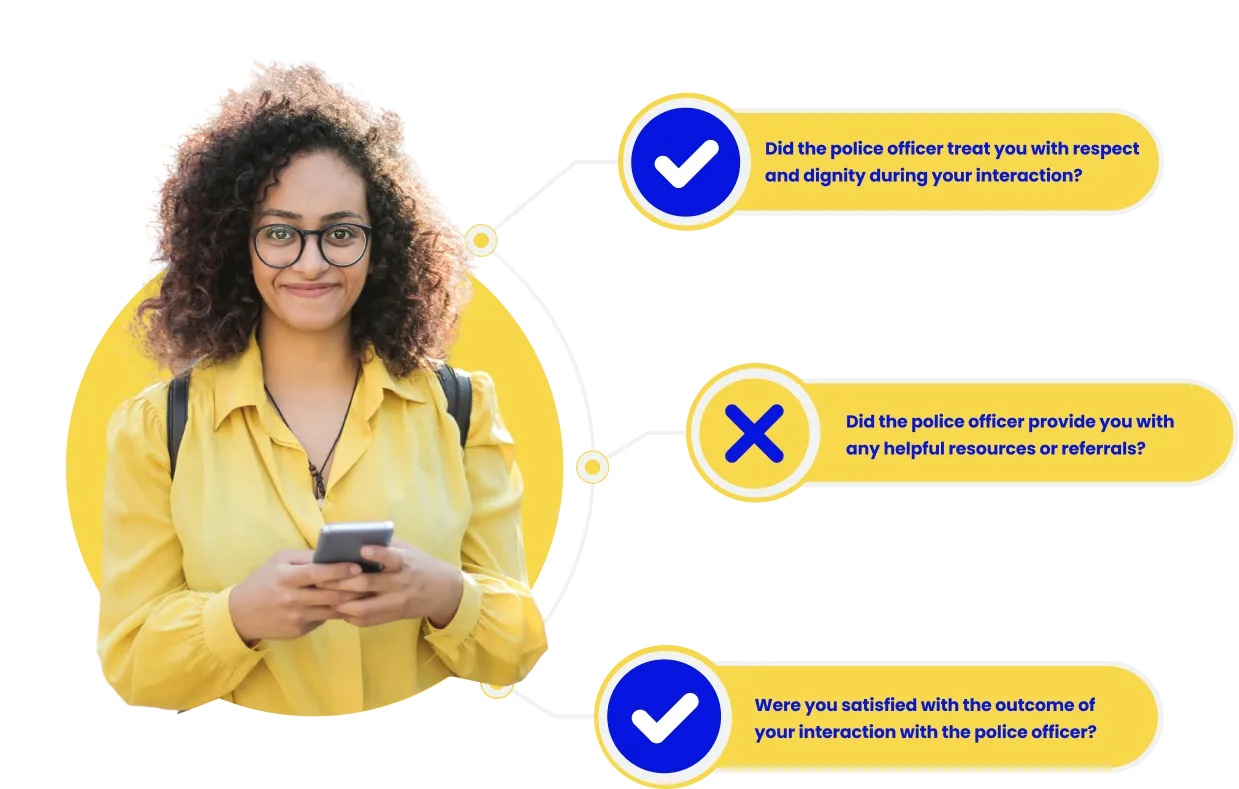In an era where trust and transparency between law enforcement agencies and the communities they serve are paramount, community policing has emerged as a crucial strategy. However, simply implementing community policing initiatives is not enough; agencies must also measure their effectiveness to ensure they are achieving their intended goals and fostering positive relationships with the public. This is where surveys come into play, providing a powerful tool for gauging the community’s awareness, perceptions, and experiences with these efforts.
Understanding Community Policing:
Community policing is a philosophy that emphasizes building strong partnerships between law enforcement and the communities they serve. It involves collaborating with community members to identify and address their concerns, leveraging their knowledge and resources to develop effective problem-solving strategies. By fostering open communication and mutual understanding, community policing aims to improve public safety, reduce crime, and enhance the quality of life for all residents.
The benefits of community policing are numerous. It helps build trust and legitimacy, empowers communities to take an active role in their own safety, and promotes a proactive approach to addressing underlying issues that can lead to crime and disorder. Additionally, community policing can improve intelligence gathering, leading to more effective investigations and crime prevention efforts.
The Role of Surveys in Evaluating Community Policing Initiatives:
While the goals of community policing are clear, measuring its effectiveness can be challenging. Surveys provide a valuable tool for law enforcement agencies to gain insights into the community’s perceptions, experiences, and level of engagement with community policing efforts. By directly soliciting feedback from residents, agencies can identify areas of strength and weakness, pinpoint specific concerns, and make data-driven decisions to enhance their strategies.
Surveys offer several advantages over other methods of evaluation. They allow for anonymous and candid responses, which can encourage more honest feedback. They also provide quantifiable data that can be analyzed and compared over time to track progress and identify trends. Additionally, surveys can reach a broader segment of the community, ensuring that diverse perspectives are captured.
Designing Effective Community Policing Surveys:
To maximize the value of community policing surveys, careful design and implementation are essential. The survey questions should be clear, unbiased, and tailored to the specific goals and objectives of the agency’s community policing initiatives. A combination of closed-ended and open-ended questions can provide both quantitative and qualitative data, offering a well-rounded understanding of the community’s perceptions.
Ensuring a representative sample of the community is crucial. Agencies should consider factors such as demographics, geographic distribution, and varying levels of engagement with law enforcement to obtain a comprehensive picture. Additionally, offering the survey in multiple languages and using accessible formats can help increase participation and ensure diverse perspectives are captured.
Analyzing and Interpreting Survey Data:
Once the survey data has been collected, the next step is to analyze and interpret the results in a meaningful way.This may involve statistical analysis, data visualization techniques, and identifying patterns and trends within the responses. Agencies should look for areas where community perceptions align with their intended goals and areas where there are gaps or discrepancies.
Leveraging expert analysts or data scientists can be valuable in extracting actionable insights from the survey data. They can apply advanced analytical techniques, such as sentiment analysis and text mining, to uncover deeper insights and uncover underlying themes or sentiments that may not be immediately apparent.
Using Survey Insights to Improve Community Policing Strategies:
The true value of community policing surveys lies in their ability to inform and enhance an agency’s community policing strategies. By actively listening to and understanding the community’s perspectives, agencies can tailor their efforts to address specific concerns, build trust, and foster stronger partnerships.
For example, if survey results indicate a lack of awareness about certain community policing programs or initiatives, agencies can adjust their outreach and communication strategies to improve visibility and understanding. If the data reveals concerns about officer conduct or biased policing practices, agencies can prioritize training and policy reforms to address these issues.
Conclusion
Measuring the effectiveness of community policing initiatives is essential for ensuring that agencies are achieving their goals and fostering positive relationships with the communities they serve. Surveys provide a powerful tool for gathering direct feedback and insights from the community, allowing agencies to make data-driven decisions and continuously improve their strategies.
By designing well-structured surveys, analyzing the data through a comprehensive lens, and actively implementing changes based on the findings, law enforcement agencies can strengthen their community policing efforts, build trust and legitimacy, and ultimately enhance public safety and quality of life for all residents.
To learn more about leveraging surveys to measure and improve your agency’s community policing initiatives, explore our Officer Survey platform or contact us today for a personalized consultation.








